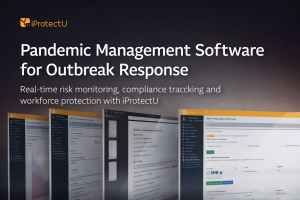Health and Safety Software » Health and Safety Software News » Health and Safety » Navigating the Hazards of Transit Packaging
Navigating the Hazards of Transit Packaging

However, amidst the hustle and bustle of packaging, protecting and transporting goods, it is important not to overlook the importance of health and safety. Transit packaging companies face a unique set of hazards that require careful consideration and proactive measures to ensure the well-being of their employees and maintain a safe work environment.
Physical Hazards
- Lifting and Handling Heavy Packaging Materials: Transit packaging often involves handling heavy items, such as corrugated boxes, wooden pallets, and shrink wrap rolls. Improper lifting techniques can lead to musculoskeletal injuries, such as back strains and sprains. Employers should provide training on proper lifting techniques and mechanical lifting aids should be used whenever possible.
- Slips, Trips, and Falls: Slippery surfaces, uneven floors, and cluttered work areas can increase the risk of slips, trips, and falls. Regular housekeeping practices, proper footwear, and clear walkways are essential to prevent these incidents.
- Sharp Edges and Puncture Hazards: Corrugated boxes, metal strapping, and other packaging materials can have sharp edges and corners that can cause cuts and puncture wounds. Personal protective equipment (PPE), such as gloves and safety glasses, should be worn.
- Powered Equipment Hazards: Forklifts, pallet jacks, and other powered equipment used in transit packaging pose potential hazards if not operated safely. Proper training and certification are essential for operators, and clear operating procedures and safety protocols should be established.
Chemical Hazards
- Exposure to Fumes and Dust: Adhesives, solvents, and other chemicals used in transit packaging can release harmful fumes and dust particles. Adequate ventilation and respiratory protection, such as masks or respirators, should be provided to prevent inhalation.
- Skin Sensitisers: Some packaging materials, such as certain types of adhesives and coatings, can contain skin sensitisers that can cause allergic reactions. Employees should be aware of potential skin sensitisers and wear appropriate PPE, such as gloves and protective clothing.
Ergonomic Hazards
- Repetitive Tasks: Transit packaging often involves repetitive tasks, such as lifting, packing, and stacking boxes. These repetitive motions can lead to musculoskeletal disorders, such as carpal tunnel syndrome. Job rotation, frequent breaks, and ergonomic workstations can help reduce ergonomic risks.
- Noise Exposure: Forklifts, machinery, and other equipment used in transit packaging can generate high noise levels. Hearing protection, such as earplugs or earmuffs, should be provided to prevent noise-induced hearing loss.
Safety Precautions
- Regular Safety Inspections: Carry out regular safety inspections to identify and address potential hazards in the workplace. These inspections should cover areas such as storage, machinery, and work practices.
- Emergency Preparedness: Develop and implement emergency response plans to address potential incidents, such as fires, chemical spills, and injuries. Ensure workers are familiar with emergency procedures and evacuation routes.
- Incident Reporting and Investigation: Encourage open communication and incident reporting. Investigate incidents promptly to identify root causes and implement corrective actions to prevent recurrences.
- Safety Training and Awareness: Provide comprehensive training to all employees on safety procedures, hazard identification, and PPE requirements. Regularly refresh training to ensure knowledge retention and adherence to safety protocols.
In the industry of transit packaging, prioritising health and safety is not just about protecting workers and preventing accidents; it is about creating a sustainable and productive work environment. By embracing proactive safety measures, transit packaging companies can safeguard their employees’ well-being, enhance operational efficiency, and build a reputation for excellence in safety practices.
Arrange your demonstration
Let us show you how we can transform your health and safety, risk and compliance management
Please choose a date and time for your demo. We look forward to meeting with you.
Latest Updates & Information

A Very iProtectU New Year’s Tale – From Compliance to Continuous Confidence in 2026!
As we step into 2026, it’s time to embrace a smarter approach to safety. Discover

Twas the Night Before Compliance: A Very iProtectU Christmas & New Year’s Tale
Ho ho hold on – before you climb that ladder to hang the fairy lights…

How Pandemic Management Software Helps Organisations Respond to Europe’s Escalating Flu Outbreak
Europe’s rising influenza activity underscores the importance of having the right digital tools in place.

Supporting Local Sustainability: Restoring Native Oysters to the Solent
iProtectU is proud to support the Final Straw Foundation’s Native Oyster Restoration Project, helping restore

iProtectU Featured on IBEC: The Real Truth About Choosing Health & Safety Software”
When a national voice like IBEC publishes your perspective, it matters.
This week, iProtectU

Why Modern HSE Software is Essential – How iProtectU is Shaping the Future of Safety
Modern HSE software has evolved into a strategic necessity, empowering organisations to manage risk proactively,







